How to set children up for good hearing throughout life
Growing resilient hearing apparatus and developing processing systems that work
“MUMMY! STOP!”
I freeze. My daughter’s voice is full of urgency and a touch of panic. The crunching and crackling of the dead leaves under my feet ceases. The sudden silence fills my skull like cotton wool, but only for a second. With the loudest sound removed, I rapidly become aware of the other sounds around me. The susurrus of the trees in the hot, dry wind. The occasional alarm squawk of an unseen canopy bird. My own heartbeat as I hold my breath and listen.
I listen. I look. I scan my surroundings. Brown leaves, brown dust, brown tree trunks. No obvious snakes, spiders, wasp nests, spiky plants. Where’s the danger?
“Siafu! Can’t you hear them?”
My daughter points. Barely a metre in front of my unprotected feet, mostly hidden under the dry leaves, trails of amber brown ants spread like veins across the parched soil. Driver ants are blind, and so won’t come towards prey, but if you stumble upon their hunting party, they swarm up onto your skin, biting ferociously. Their Swahili name, ‘siafu’, means ‘condolences’ - it’s the correct response when you see someone desperately swiping the ants off their legs and feet. Now that I know where they are, if I concentrate, I can hear them too - the soft, white-noise hiss of many tiny jointed legs scurrying over the forest floor.
We find another way through the forest.
Children have phenomenal hearing
My daughter, lovely though she is, is not a superhero. Most children have incredible hearing. Their small, light eardrums and undamaged hair cells allow them to react to sounds at frequencies from 20 to 20,000 Hz, starting at just a whisper above 0dB.
But hearing is not just about detecting frequencies and moving our eardrums. If it were, a 3dB increase in volume, carrying twice the relative power, would sound twice as loud. Instead, our nervous systems perform enormous amounts of complex processing on the information we receive, allowing us to extract the meaning of the noises we hear across a wide range of frequencies and volumes.
We start learning how to do this processing very early. By starting to listen while still in the womb, babies are born already able to recognise their mother’s voices and their native language. As their ability to detect different frequencies matures, they begin to learn which parts of a sound event (such as a sentence) are most important. In adulthood, we deliberately listen to the frequencies in a sound that we expect to be able to use to identify the sound. While they are learning what these important frequencies are, babies listen in broadband. It can take several years to develop the skill, and until then they will struggle to focus on sounds in a noisy environment.
Eventually, by the time children are four or five, they have become much better at selectively listening to one sound among many, and they focus on the most relevant parts of a sound. These refinements in auditory processing continue to improve hearing selectivity well into teenagerhood (as many parents find out).
But things don’t continue improving. Over about the age of 25, our sound collection equipment starts to show signs of wear and tear and we begin to lose the upper ranges of our hearing ability. As we age further, the effect progresses:

What is it that reduces our ear’s ability to collect and detect sound as we get older?
Our ability to clear ear wax declines and our ears are more likely to become blocked.
The hair cells that sense sounds in our inner ear become damaged.
The membranes that transmit sound waves become damaged or change their structure
The tissue that makes the right type of fluid to surround our hair cells becomes less effective, increasing the viscosity of the fluid and making it harder for the hairs to move.
The nerves that conduct impulses from the ear to the brain become less effective.
But, to begin with, that reduced detection is not a problem. Our brains just work a little harder, we extract a little more information from every morsel of sound we do collect and our conscious minds don't notice the difference. Eventually, though, there's just not enough information getting through for us to reconstruct the missing bits. We start to experience hearing loss.
At this point, things go wrong in quick succession. To save resources, the body maintains many systems depending on how much they're used. The components of the our sense of hearing are no exception: as perception begins to fail, the processing equipment atrophies, accelerating the hearing loss and the damage to our lives.
Hearing is vital for our social interactions, our enjoyment of entertainment, and even for our safety. It’s no surprise, therefore, that hearing loss in older adults increases the risk of social isolation and falling. It is even associated with increased risk of cognitive impairment, cognitive decline, and dementia.
Our technologies to support hearing are limited (hearing aids to simplify sounds and cochlear implants to bypass the ear and stimulate the auditory nerve directly) and we have no ways to restore hearing that has been lost completely. It is important that we maintain hearing as long as we can.
We should try to protect ourselves from the loud noises that damage our ears, but that's not always practical, or even possible. Luckily, there is something we can do to set up our hearing to last longer in the face of our loud lives…
The better our hearing in childhood, the less likely we are to lose it in adulthood
We've seen that:
both sound collection and sound processing are important to good hearing
the strength of our sound processing is dependent on how well it was originally trained and calibrated
being able to collect sounds maintains that sound processing for longer
It follows that setting up the most effective sound collection and the most efficient sound processing that we can at the start will help us better avoid hearing loss in adulthood. And wouldn't you know it, traditional upbringings might just provide both of these things.
Traditional childrearing practises help children develop great hearing apparatus
As hearing is such an important sense, unsurprisingly, hearing development is supported unconsciously in many ways in more traditional cultures.
We'll start with the ear itself.
The first job after birth is to clear the gunk (a technical term meaning the neonatal combination of amniotic fluid, vernix, and wax) or of the ear and start listening. Fortunately, the regular, frequent, and specific mouth and jaw movements of breastfeeding produce mechanical loads that help to drive it out and permit more sound to penetrate. These mechanical loads from breastfeeding also drive bone growth, creating ear canals that are the right size and shape. Wide ear canals transmit more sound, but there's also the effect of well developed eustachian tubes, which are likely to better prevent ear infections.
Weaning to tougher traditional foods continues these mechanical loads, and hence continues the development of ear structures.
Breastfeeding and traditional weaning also develop the hard palate and the airway above it. The better developed that airway is, the easier it is to use, which lets kids in traditional communities grow up breathing through their nose instead of their mouth. This, as we have talked about before, helps to filter out a lot of particulate debris that might inflame the airways and lungs, and a lot of pathogens that might be able to get a foothold during that inflammation and damage various body systems, including hearing.
Hearing impairment from ear infections is often short lived, but, as we have discussed before, the brain learns different processes at different times of development, and its development is ‘kinda exponential’ (in that the more it's learnt to do the more it can learn to do). Thus, reducing infections, lets kids in traditional communities ride that runaway learning train as far as it’ll take them, which is a very long way if the environment is right to teach them…
Traditional childrearing environments help children develop great hearing processing
It’s easy to imagine that non-urban environments protect hearing simply by being quieter, but that may not be the entire story. As I mentioned above, processing is just as important as equipment, and that processing has to be learned.
As any good teacher will tell you: “Please leave and let me rest, and also vote for higher funding for education!”
As any good teacher, who’s either retired or is on holiday, will tell you: “Learning is the product of motivation and practice! Also, please vote for higher funding for education!”
A more traditional, less urban environment drives learning of sound processing by offering both of these things in abundance.
Motivation - People living in most parts of the planet are motivated to listen for difficult-to-detect sounds for food (for example, while hunting), for communication (drums and whistles are among the long-distance options available when phones aren’t), for cooking (I only found out recently how much of keeping a fire going is about listening to it), and for safety (did I mention siafu? They’re very motivating). While not all of these rewards apply directly to children, there are plenty that do.
Practice - All of the above motivating occurrences are daily events. Normally more than daily. The level of background noise in the rainforest, and many other non-industrialised environments, varies between ‘barely an inconvenience’ and ‘barely hear yourself think’, but it’s always there, getting in the way of hearing, pushing the development of better processing. And it’s this combination of continual need and continual challenge that make it such great practice.
In combination with an effective reward system (ie. one that has not been blasted by dopamine-engineered foods and media), this level of motivation and practice create an ideal place to learn to process sound.
It’s a pity that doesn't happen everywhere.
WEIRD cultures do not set children up for easy lifelong hearing
You know where I’m going here…
Many aspects of WEIRD (Western, Educated, Industrialised, Rich, and Democratic) culture make it harder for children to develop hearing that lasts through life. In one study in the Netherlands, 1 in 12 children aged between 9 and 11 had some degree of hearing loss.
Let’s start with the structure of the ear. There are many reasons for the low rates of breastfeeding in WEIRD cultures, but they have the same effect. Children who do not breastfeed are significantly more likely to develop ear infections. But it goes further than that. In WEIRD cultures, because of inadequate maternity leave, mothers often pump breastmilk rather than breastfeed. And while this is undoubtedly better than feeding formula milk, pumped breast milk doesn’t provide the mechanical loads needed for normal ear canal growth, and doesn’t help the ear canal drain, which is thought to be why it increases the risk of ear infection.
Snoring is also a risk factor for ear infections - but I’m not sure to what extent this is causative (by increasing inflammation in the tube connecting the ear to the mouth), or correlative (both snoring and ear infections indicate abnormal structures at the back of the throat).
WEIRD children often have allergies, and allergies affect hearing through inflammation and mucus buildup in the ear canals. This means that a child’s hearing can be impaired for periods of time. This inflammation also increases the risk that a child develops chronic ear infections.
Now for the microbiome. Many WEIRD children don’t have the opportunity to develop a normal microbiome. Nearly half of babies in the UK are born surgically (by C-section), and in some countries, the rate is much higher. Babies born by C-section are more likely to develop ear infections and have multiple episodes of infection. C-section babies are also more likely to have problems integrating sounds with their other reflexes, which puts them at higher risk of sound-processing problems.
Exposure to infection-causing microbes is also higher in WEIRD cultures. Our close living and poorly-ventilated homes, schools, and workplaces means that we share our germs frequently and generously. In addition, children who are exposed to passive smoke are more vulnerable to infections, fluid in the ear, and hearing loss through damage to the inner ear.
However, we WEIRDos have developed an amazing tool that reduces a child’s risk of ear damage from microbes. Vaccination. We routinely vaccinate against rubella, measles, and meningitis, which are major contributors to child hearing loss. The pneumococcal vaccine (PCV), for example, has significantly reduced ear infection rates and related antibiotic use, and reduces hearing loss. It’s a fantastic way of reducing some of the health consequences of our non-traditional living environments.
Finally, what’s a child’s sound diet like in WEIRD cultures?
My knee-jerk emotional reaction to the WEIRD noise-scape is that it is very challenging, but that's not entirely accurate. Sure, all of the painful, probably-hearing-damaging events I can remember have been in some way manmade (engines, fireworks, gigs, cinema, the Tube in general), and being outside in cities is much louder than any natural environments (or at least any natural environments where people routinely live - the base of giant waterfalls can easily exceed Oxford Circus, and I hear that Krakatoa can have its moments too). But, while moments of loudness challenge a child’s acoustic equipment, they’re not (in most cases) their normal sound input. They’re not what determines how they learn to process.
Learning to process happens in the gaps. Or for WEIRD kids, not learning to process. For the vast majority of our lives, WEIRD people can adjust the volume of the things we want to hear, so we never have to struggle to understand. Don’t want background noise in your home? Install double-glazing! Netflix binge too quiet? Turn it up! Background noise in your media? Subtitles for the win! Bus journey too loud to hear your podcast? Noise cancelling on! We never have to listen hard any more.
And, honestly, there's nothing important left to listen hard for anyway. If it's important, it'll have been designed to have a pitch and volume that easily stands out. Even ovens, which were plenty clear enough, now use your phone to channel their beeping to your location so you don't have to be constantly listening out to avoid burning your lasagne.
Where's the damage in that? I hear you ask. Think back to what we said about developing auditory processing. You need motivation and practice. We do not give kids in the West either of these things. Working hard to understand things against background noise, be that quiet or loud, is critical to building up those processing skills that later allow adults to compensate for accumulating damage to their ears. Higher rates of hearing loss in WEIRD environments, especially in young to middle-aged people, may well be the result of a pincer movement between louder events damaging the ear, and less-well-developed processing.
(nb. The scientific jury is still out on whether using noise-cancelling headphones a lot causes a reduction in a child’s ability to process sound, or whether children who struggle to process sounds are more likely to want to use noise-cancelling headphones a lot. It’s a hard thing to pull apart, scientifically. Obviously, noise-cancelling headphones, earplugs, and other PPE are still useful to protect developing ears in damaging sound environments).
This is what we can do to help children maintain good hearing.
So, knowing all of this, how do we set children up to enjoy better life-long hearing?
Give birth at home - I have to mention birth, folks, but I appreciate that for most of you reading this article, the ship has sailed. Those early microbial colonisers have an enormous impact on the ecosystem that develops. Home birth means that the early colonisers are the bacteria that thrive in the child’s home environment. Home birth also means vaginal birth and the right kind of microbes, and children born at home are less likely to be given antibiotics.
Breastfeed - And I know, it’s another very loaded conversation, but breastfeeding provides both the bacteria and the mechanical loading that enables the baby to grow hearing apparatus that works. Both of the above also reduce the risk of allergies, reducing ear inflammation.
Reduce pathogens that lead to ear infections and hearing loss - The big one here is to get children vaccinated. This protects them from ear infections and also reduces their risk of needing antibiotics to treat preventable disease. This also means ensuring good ventilation, helping children to breathe through their nose not their mouth, and practising good hand and respiratory hygiene - washing hands, covering the nose and mouth for coughs and sneezes, etc.
Reduce exposure to excessively loud sounds - Children can spend a lot of time in places where the sound threshold is set by hearing-impaired adults (many of us in WEIRD environments). Consider taking volume-limiting ear plugs (or noise-cancelling headphones in some cases) to the cinema, band or orchestra practice, or kids party. And be very careful of children using headphones for listening to music or entertainment, because you can’t hear what volume the child is exposed to. There is now good evidence that use of portable devices and headphones is linked with hearing damage in younger children. Always set volume limits where possible.
Increase exposure to a variety of sounds - Natural environments have unique soundscapes, and the more diverse the ecosystem, the more varied the sounds. Teach children to pay attention to the sounds they hear. There are many apps for helping to learn birdsong, bugsong, and frogsong, depending on where you live. (nb. My spellcheck is objecting to the words bugsong and frogsong, but just because something isn’t a word, doesn’t mean that it shouldn’t be. They can be much more musical than many birds).
In every culture, children don’t always listen. But there’s plenty we can do to make sure they always hear.
Want to hear my partner and I discuss our experiences of setting up children for better auditory processing? We have a podcast where we use the topic from the previous post and give context and examples to help bring it to life. There’s also a weekly news section where we dive into interesting research into child development from the previous week.
This is the sound of Sunday evenings in our house!
You might also like…
Notes
How hearing develops: https://leader.pubs.asha.org/doi/10.1044/leader.FTR1.12042007.6#
How’s your hearing at higher frequencies? This page has youtube videos of sounds at different frequencies: https://decibelpro.app/blog/sounds-only-kids-can-hear/
Age-related hearing loss. https://pmc.ncbi.nlm.nih.gov/articles/PMC8446668/
1 in 12 children aged 9-11 have hearing loss: https://jamanetwork.com/journals/jamaotolaryngology/fullarticle/2643553
Breastfeeding in the first 48h improves performance on the newborn hearing test (Transient evoked otoacoustic emissions) https://pmc.ncbi.nlm.nih.gov/articles/PMC7790499/
Pumped breastmilk is a risk factor for ear infections: https://link.springer.com/content/pdf/10.1186/s12887-022-03427-7.pdf
“ 37.5% of the children who developed acute otitis media (AOM) received pumped breast milk compared to 90.8%of the children who did not develop acute otitis media. Logistic regression revealed that receiving pumped breast milk was considered a risk factor for the development of AOM”
C-section is a risk factor for ear infections: https://www.mdpi.com/2673-8007/2/3/46
Vaginal delivery represents another significant protective factor against infections. Children born by caesarian section (CS) experience a higher number of subsequent respiratory recurrences in comparison with children born by vaginal delivery.
PCV vaccine reduces hearing loss: https://journals.plos.org/plosmedicine/article?id=10.1371/journal.pmed.1004375#abstract0
Using headphones may lower hearing thresholds in children: https://www.tandfonline.com/doi/full/10.1080/14992027.2016.1190871#abstract
Attending clubs and concerts as a teenager is known to damage hearing, but this study suggests that portable music device use is associated with high-frequency hearing loss https://jamanetwork.com/journals/jamaotolaryngology/fullarticle/2684510
Home birth results in a different microbiome to hospital birth: https://www.nature.com/articles/s41598-018-33995-7

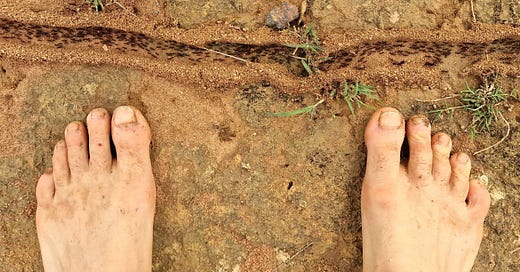



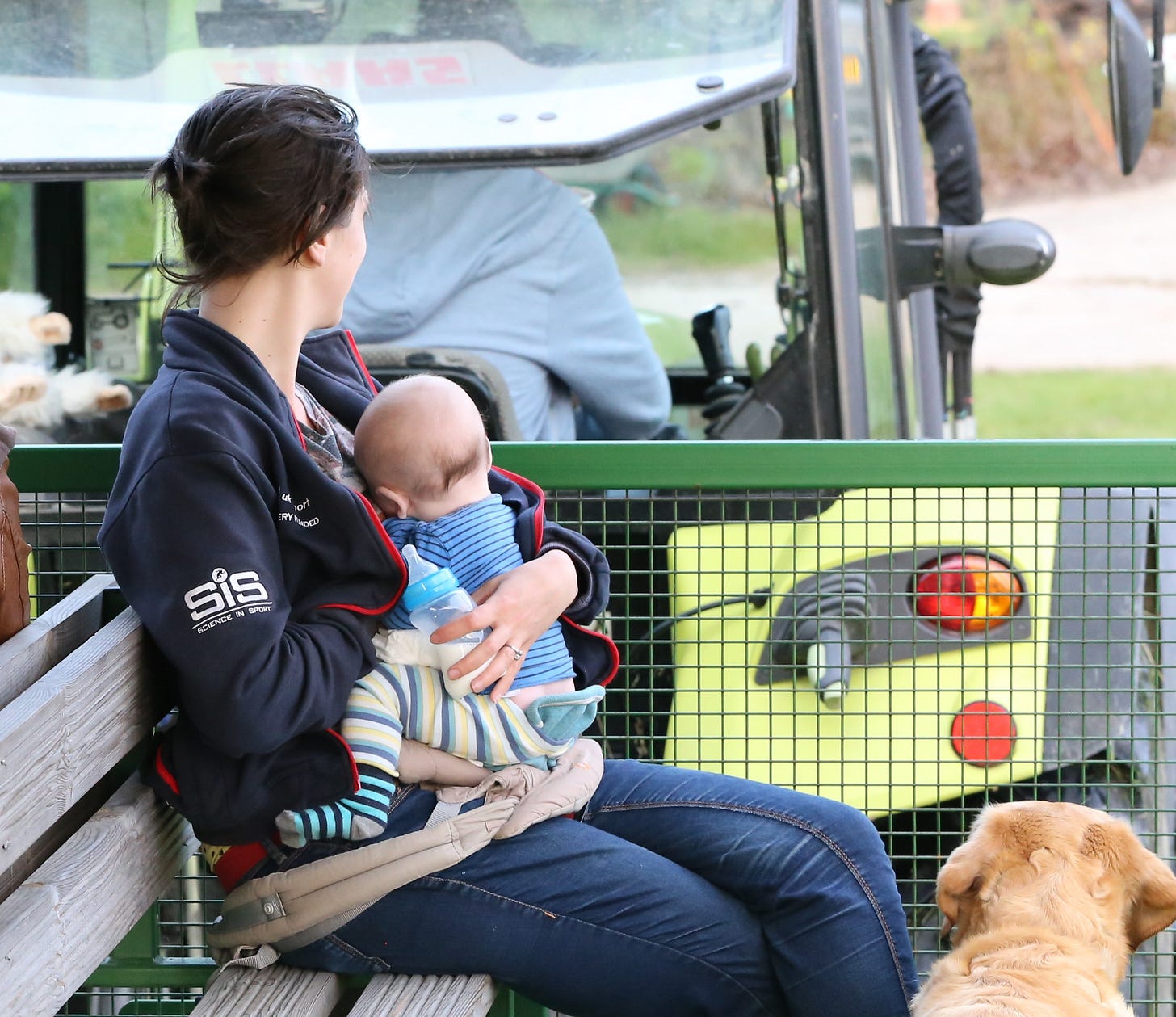

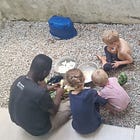
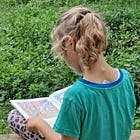
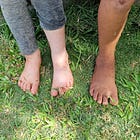
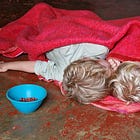
Frogsong makes me think of McCartney and We All Stand Together. Definitely should be a word though! When would it be advised to continue with ear defenders going on planes would you think? Another fascinating, thought-provoking article, thank you
I've been keeping an ear out for this one for some time now - hoping the scientific evidence is more clear re noise-cancelling headphones. It's been on my mind a lot, specifically every time I pop my noise-cancelling airpods on a tiny part of me cowers and wonders if I'm slowly damaging my ears, or brain! esp with the rise in APD among adults... a really well-rounded take on the culprits and some great tips too!
https://www.theguardian.com/science/2025/feb/22/filter-trouble-why-audiologists-worry-noise-cancelling-headphones-may-impair-hearing-skills#:~:text=Excessive%20use%20of%20noise%2Dcancelling,as%20muscles%20weaken%20without%20exercise.
Another one - slightly unrelated but also on devices.. the effect of the close proximity of radio-frequency devices (mobiles, smart watches etc) on a baby's brain due to thinner skull and less developed nervous system.. we kept ours well away just in case (and my partner is adamant on using airplane mode which drives me nuts when I try to reach him but that's another story)..